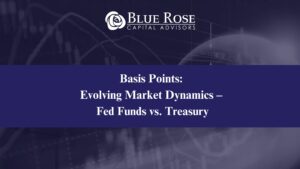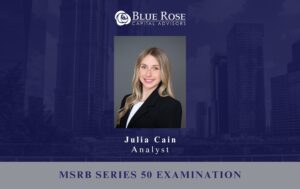By design, the yields on State and Local Government Series (SLGS) securities are slightly lower than the yields on open market securities (OMS). This often encourages issuers to bid OMS for refunding escrows rather than using SLGS, for a higher portfolio yield and a lower cost to fund a defeasance escrow. Recently, though, we’ve witnessed SLGS portfolios outperforming OMS portfolios more often than in the recent past. The reason for this is not because SLGS rates are yielding higher than OMS rates, but rather due to technical differences in timing and mechanics for the two types of portfolios and the current inversion of the yield curve.
The overall yield a municipal issuer receives on a refunding escrow, produced by purchasing either SLGS or OMS, is determined on the day the refunding bonds are priced. This is typically two to four weeks prior to the day of settlement. When subscribing for SLGS on the day of pricing, an issuer locks in the interest rates associated with securities that will earn interest from the settlement date to maturity. When bidding on the open market, an issuer locks in interest rates offered by a dealer who will model their portfolio with securities that earn interest from the pricing date to maturity. As a result, SLGS portfolios utilize slightly shorter maturing securities and OMS portfolios utilize slightly longer maturing securities. In a typical market environment with a positively sloped yield curve, this distinction is a disadvantage to SLGS portfolios (since shorter maturing securities have lower yields) and is an advantage to OMS portfolios (since longer maturing securities have higher yields). However, because the yield curve is currently inverted, shorter maturing securities (SLGS) often yield higher and longer maturing securities (OMS) often yield lower – reversing the effect of the distinction on the two types of portfolios.
Another idiosyncrasy caused by the inversion of the yield curve that is affecting OMS portfolios is negative carry. When a dealer bids on an OMS escrow portfolio, it locks in current rates by purchasing the portfolio on the day of pricing even though it won’t actually receive any bond proceeds to pay for the portfolio until the settlement date. When the yield curve is inverted, the borrowing rate at which the dealer funds this purchase until the settlement date is often higher than the yield on the portfolio. This results in a negative carrying cost to the dealer which is recouped through a higher sale price on the portfolio offered to the municipal issuer. This negative carry is a recent phenomenon. In more traditional yield curve environments, the carry is actually positive, lowering the purchase price of the escrow portfolio and further increasing the attractiveness of the OMS over SLGS.
Depending on the size and timing of draw requirements on an escrow, these two factors could either reduce or eliminate the benefit of OMS portfolios. We encourage you to reach out to your Blue Rose advisor for an indicative escrow cash flow analysis to determine if an open market escrow can be expected to provide incremental value for your escrow transaction.
About the Author:
Georgina Walleshauser, Analyst
Georgina can be reached at:gwall[email protected]



